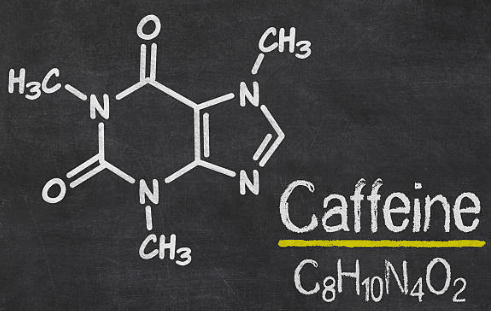Caffeine: What It Is, How It Works, and Its Benefits
One of the most widely consumed substances in the world is found in coffee, tea, energy drinks, and even chocolate. But what exactly is this popular stimulant, and how does it work in the body? In this easy-to-understand guide, we’ll explore what this substance is, how it affects your body, its benefits, and how to use it wisely.
What Is It?
The stimulant in question is a natural compound commonly found in coffee beans, tea leaves, and cocoa beans. It’s classified as a central nervous system stimulant, which means it works by activating the brain and nerves to help you feel more awake and alert.
For many people, a morning cup of coffee or tea is a daily ritual that helps kickstart their day. This compound is also used by athletes to enhance performance and by students and professionals to boost focus and productivity.
How Does It Work?
Once consumed, the stimulant is quickly absorbed into the bloodstream and travels to the brain. There, it blocks the effects of adenosine, a neurotransmitter responsible for making you feel tired. By blocking adenosine, you feel more awake and energized.
Additionally, the compound increases the production of dopamine and norepinephrine, which improve mood, focus, and alertness. This is why it’s often used as a quick pick-me-up when you’re feeling sluggish or need to stay focused during a busy day.
How Long Do the Effects Last?
The stimulant’s effects can vary from person to person, but generally, it starts working within 15–30 minutes of consumption. The half-life—meaning the time it takes for half of the substance to be eliminated from your body—ranges from 3 to 5 hours. For example, if you consume 200 milligrams (about the amount in a cup of coffee), 100 milligrams will still be in your system after 3 to 5 hours.
This is important to consider, especially if you’re sensitive to its effects or consume it later in the day, as it can interfere with your sleep.
Benefits
This natural stimulant offers a wide range of advantages, which is why it’s such a popular ingredient in beverages and supplements. Here are some key benefits:
Increased Alertness and Focus
One of the main reasons people consume it is for the mental boost it provides. It helps you stay alert, focused, and more productive, making it a go-to for students and professionals tackling heavy workloads.
Improved Physical Performance
In the fitness world, this stimulant is widely used to enhance physical performance. Research shows it can improve endurance, strength, and overall exercise performance. By reducing the perception of effort and fatigue, it allows you to push harder during workouts, making it a popular supplement for athletes and gym-goers.
Enhanced Mood
The increase in dopamine, often referred to as the “feel-good” neurotransmitter, can improve mood and even reduce the risk of depression in some individuals. While not a cure for mood disorders, it can provide a temporary lift in spirits, which is why many associate their morning coffee with a sense of well-being.
Support for Cognitive Function
The stimulant has been shown to improve cognitive functions such as memory, reaction time, and decision-making. It’s especially helpful when you’re sleep-deprived, as it can temporarily counteract the negative effects of sleep loss. This makes it a valuable tool for individuals needing a quick mental boost during long study sessions or extended work hours.
Fat-Burning Properties
It’s also a common ingredient in fat-burning supplements. By stimulating the central nervous system, it can increase metabolism and help the body burn fat more efficiently. Additionally, it may help suppress appetite in some individuals, aiding in caloric control for weight loss.
Potential Disease Prevention
Some studies suggest regular consumption may reduce the risk of certain diseases. For example, research has linked moderate coffee consumption to a lower risk of Parkinson’s disease, Alzheimer’s, and certain cancers. It may also support heart health by reducing the risk of stroke. However, more research is needed to confirm these potential benefits.
Sources in Common Foods and Drinks
The stimulant is found in a wide variety of foods and beverages. Here’s a quick look at how much you can expect in some common sources:
- Coffee (8 oz cup): 80–100 mg
- Tea (8 oz cup): 20–60 mg (varies by type)
- Energy drink (8 oz can): 50–160 mg
- Soft drinks (12 oz can): 30–50 mg
- Dark chocolate (1 oz): 20 mg
- Pills (standard dose): 100–200 mg
How Much Is Safe?
Moderation is key. The U.S. Food and Drug Administration (FDA) considers 400 milligrams per day to be a safe amount for most adults, which is roughly the equivalent of four 8-ounce cups of coffee. However, individual tolerance varies, and some people may be more sensitive to its effects than others.
Consuming too much can lead to negative side effects, including:
- Jitters or nervousness
- Increased heart rate
- Digestive issues
- Insomnia
- Headaches
If you experience these symptoms, reducing your intake is a good idea.
Its Impact on Sleep
While this stimulant is great for boosting energy, it’s important to be mindful of when you consume it. Because it can stay in your system for several hours, consuming it later in the day may interfere with your sleep. For most people, it’s best to avoid it after 2–3 PM to prevent sleep disturbances.
Poor sleep quality caused by late-day consumption can lead to a cycle of needing more the next day to combat fatigue, which can further disrupt sleep. If it affects your rest, try cutting back or switching to decaffeinated options in the afternoon and evening.


